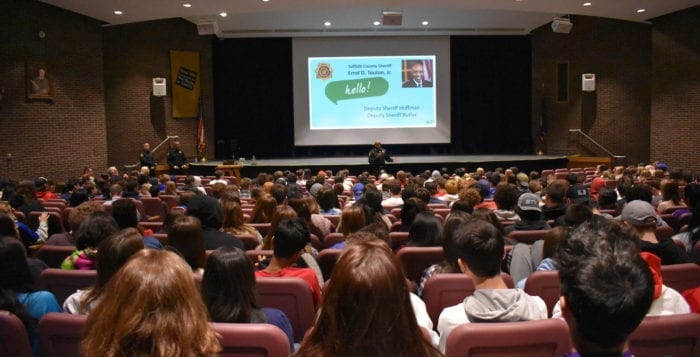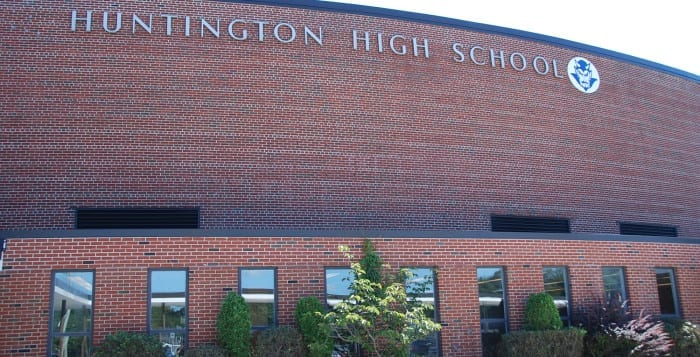1 of 31

Middle school Spanish teacher Jamie Riegel, a six-year vet of the faculty game, drives past Andy Matthews for two points. Photo by Bill Landon

Kevin “The Crusher” Walsh, fourth grade teacher and 13-year veteran of the faculty game drives to the rim for two March 1. Photo by Bill Landon
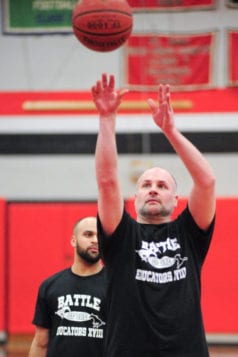
Mount Sinai boys varsity basketball coach Ryan McNeely shoots for two in the annual Battle of the Educators basketball game March 1. Photo by Bill Landon
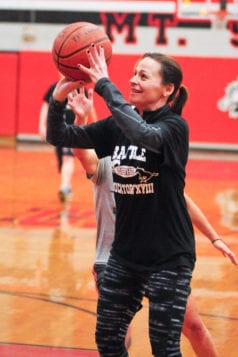
Allison “Sporty Spice” Maire, elementary school Kindergarten teacher and eight-year veteran shows poise under pressure as she shoots for two in the annual Mount Sinai Battle of the Educators basketball game March 1. Photo by Bill Landon

Mount Sinai high school Assistant Principal Matt Dyroff, a 26-year veteran of the faculty game passes to the open shooter March 1. Photo by Bill Landon

It was fun for all ages in the half time shooting contest at the annual Mount Sinai Battle of the Educators basketball game March 1. Photo by Bill Landon

Andy Matthews, Director of Math, Science and Technology, a 15- year veteran of the faculty game, drains a 3-pointer in the annual Mount Sinai Battle of the Educators basketball game March 1. Photo by Bill Landon

Rookie Cory “Kareem” Doyle, a middle school English teacher, scores on a “sky hook," as high school Spanish teacher Conor Sussillo watches in the annual Mount Sinai Battle of the Educators basketball game March 1. Photo by Bill Landon

Brandon Loomis, elementary school physical education teacher with another two hand jam March 1. Photo by Bill Landon

It was fun for all ages in the half time shooting contest at the annual Mount Sinai Battle of the Educators basketball game March 1. Photo by Bill Landon
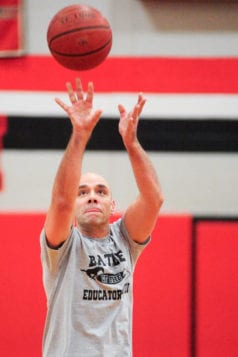
Dave Herrschaft, elementary/middle school physical education teacher and six year veteran shoots "nothing but net" on this 3-pointer March 1. Photo by Bill Landon

Brandon Loomis elementary school Physical Education teacher with a two hand jam in the annual Mtount Sinai Battle of the Educators basketball game March 1. Photo by Bill Landon

It was fun for all ages in the half time shooting contest at the annual Mount Sinai Battle of the Educators basketball game March 1. Photo by Bill Landon

Dan Tappin and Michael Pappalardo battle for a rebound in the annual Mount Sinai Battle of the Educators basketball game March 1. Photo by Bill Landon

Erin Pipe, middle school Spanish teacher and two year vet of the game scores two in the annual Mount Sinai Battle of the Educators basketball game March 1. Photo by Bill Landon

Erin Pipe, middle school Spanish teacher and two year vet of the game scores two March 1. Photo by Bill Landon

Pistol Pete Pramataris, middle school Principal and six year vet of the faculty game shows concentration as he buries a 3-pointer March 1. Photo by Bill Landon

Brandon Loomis, elementary school physical education teacher, gets mugged by High School Assistant Principal Matt Dyroff, and High School Math teacher Julie Bernatzky March 1. Photo by Bill Landon

Brandon Loomis elementary school physical education teacher takes flight March 1. Photo by Bill Landon

Brandon “The Green Giant” Loomis, elementary Physical Education teacher and three year veteran takes flight for a thunderous dunk in the annual Mount Sinai Battle of the Educators basketball game March 1. Photo by Bill Landon

Crowd favorite Paul Resti, an elementary school Custodian and four year vet of the faculty game, buries a deep 3-pointer in the annual Mt. Sinai Battle of the Educators basketball game March 1. Photo by Bill Landon

Dan Tappin, high school Technology teacher, seven year vet of the faculty game shoots for two March 1. Photo by Bill Landon

Stacy Bugdin, high school Special Education teacher, two year vet of the faculty game, hits for 2 points March 1. Photo by Bill Landon

Dan Tappin, high school Technology teacher, seven year vet of the faculty game shoots for two March 1. Photo by Bill Landon

Andy Matthews, Director of Math, Science, and Technology, a 15 year veteran of the faculty game, drains a 3-pointer March 1. Photo by Bill Landon

Christa Marano a middle school Social Worker and 4 year vet of the faculty game drains a 3-pointer in the annual Mount Sinai Battle of the Educators basketball game. Photo by Bill Landon
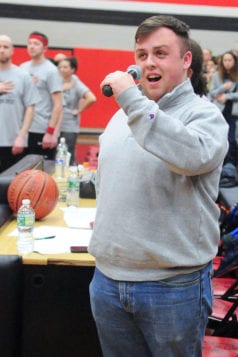
Mount Sinai High School senior Jameson Wessels impresses the crowd with his version of the National Anthem. Photo by Bill Landon
By Bill Landon
The Mount Sinai middle school all stars squared off against the high school varsity squad in the 17th annual Battle of the Educators faculty basketball game.
For yet another year, the middle school claims the bragging rights of the district as they snatched the victory in the final seconds winning 73-72. The fundraiser was played March 1 in front of a packed house where the proceeds benefit the Mount Sinai Booster Club.
All Photos by Bill Landon. Captions were provided in part by Matt Dyroff, the assistant principal Mount Sinai High School.






